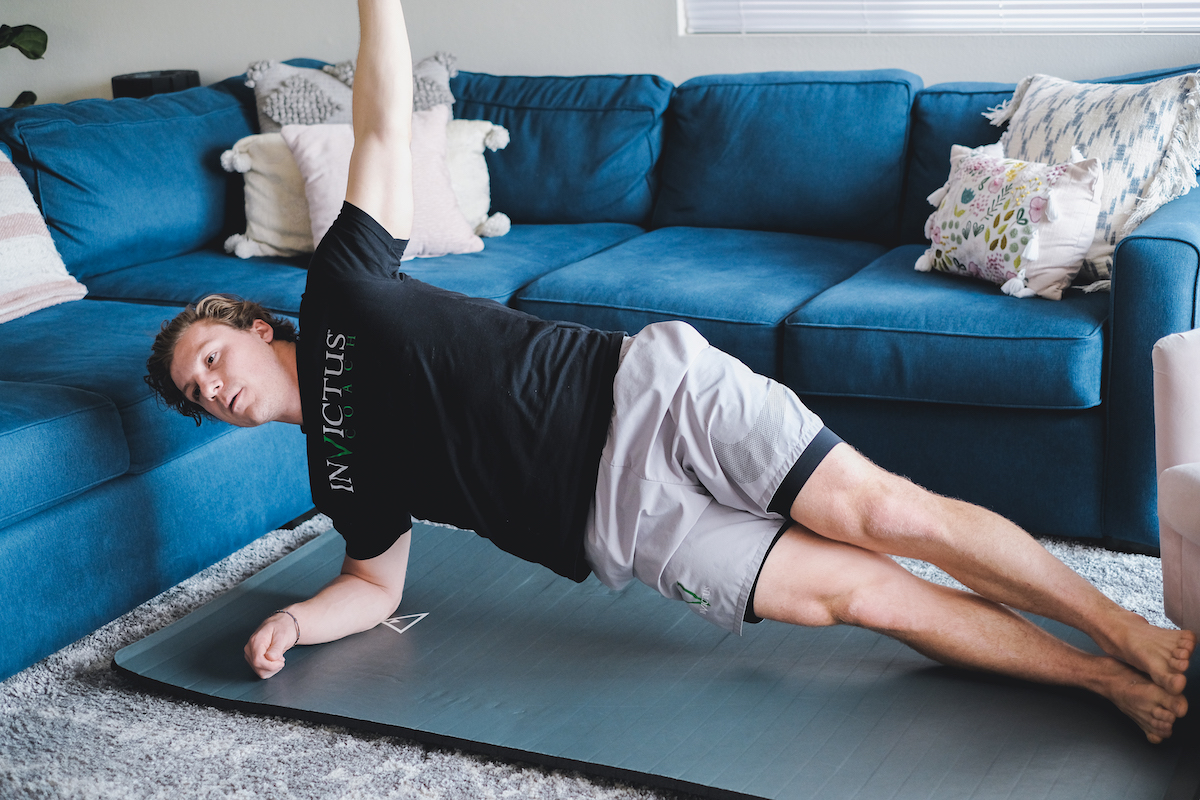
Isometrics as Injury Rehab
Written by TJ O’Brien
You probably have something that you are working around, so let’s talk about it.
At our staff meeting this week, we talked about a podcast that Coach Nick shared with the staff. It was regarding “tendon training”, using isometrics.
It was a good reminder of a simple, but sometimes paradoxical solution to a lot of pain: engaging with that pain. I have had countless talks with clients who had an injury, went to their doc, and they told them to avoid using the affected limb or joint until it felt better on its own.
One of the first seminars I went to outside of the CrossFit world was through Functional Range Conditioning (FRC). Anyone out there remember CARs? How about PAILs and RAILs? (Some of our favorite joint health modalities.)
To sum up a couple grand’s worth of seminars: move your joints through their active range of motion often. And perform isometrics at the end range of a joint’s motion in order to expand the capacity of the joint.
Our talk regarding the podcast and tendon training snapped me right back to a moment in the seminar when the coach giving it said, “Go on PubMed and search ‘positional isometrics,’ and you’ll be surprised at the mountain of research supporting their application for injury treatment and prevention.”
How to Treat an Injury with Isometrics
With that in mind, here is the TLDR of how I assess and treat minor injuries, including my own tweaks and weak points:
#1 – Rest does not increase capacity. Rest WILL make you feel better, but it will NOT increase your capacity in the affected joint. It will get you back to your baseline, which is the state in which you encountered the injury, so we’ve got to get you to INCREASE the capacity of the joint or affected area.
#2 – Movement through pain free range of motion (maximum 3/10 on a pain scale). If it hurts like hell to raise your arm up in front of your body, then don’t do it. But if it feels alright to get some movement in all the other unaffected ranges of shoulder movement, KEEP IT MOVING.
#3 – Increase your capacity through “positional isometrics”. If I lift my arm as if I’m going to throw a baseball and it hurts to bring my hand back all the way behind my head, but I can get it 90% of the way without pain, I will set up an isometric contraction at this exact angle. Isometric means there is no movement, just tension (a plank hold is an isometric for the abs, a wall sit is an isometric for the legs).
The magic behind the isometric is that it is far less taxing than concentric or eccentric movement and we can provide a ton of “afferent feedback” to our brain. In other words, getting close to the painful angle and then producing a strong contraction allows us to “convince our brain” that the area is safe to operate in. This allows compensatory muscle contractions to subside as we “reteach” the proper movement pattern while strengthening the injured area.
The prescription is simple— just 3 sets of 30 seconds on the affected area to start.
If any of this stuff piques your interest—maybe you have an injury you want to talk through—then please reply so we can chat about how you can assess and attempt to get you out of pain with this simple approach.
Have horrible neck pain through the trap. What do you recommend as far as isometric holds for that area?
TJ, Vanessa here! Still working my mobility following your way!!! Bridge, splits and squat ass2grass hold are better than ever!!! Thanks and I do miss your classes
Hi Coach O’Brien. I have a partial rotator cuff tear on my left shoulder. What movements would you recommend – ideally to abate pain but to promote strength and range of motion? Thanks!